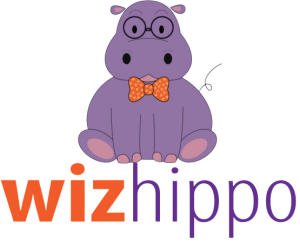
STEM (Science, Technology, Engineering, and Mathematics) education is often associated with middle and high school curriculums. However, early childhood is the perfect time to introduce these concepts, laying the foundation for critical thinking, creativity, and problem-solving skills that children will use throughout their lives. With the rapid advancement of technology, early exposure to STEM can give children the tools they need to navigate a future dominated by technological innovation. In this blog, we’ll explore the benefits of integrating STEM learning in early childhood education and provide practical tips for educators to implement it effectively. Plus, we’ll show you how WizHippo’s school management system can help you streamline this integration.
Why STEM Learning is Crucial in Early Childhood
1. Develops Problem-Solving and Critical Thinking Skills
Children are naturally curious, and STEM learning harnesses this curiosity by encouraging them to ask questions, explore possibilities, and experiment with solutions. When children engage with science and engineering tasks, they learn to think critically and solve problems in a structured way. For instance, they might experiment with building a bridge using blocks or explore the properties of water through simple experiments.
This early exposure to problem-solving nurtures a growth mindset, where children begin to understand that failure is part of learning. This is particularly beneficial as they progress through school, where more complex problem-solving will be required.
2. Encourages Creativity and Innovation
One of the misconceptions about STEM is that it’s strictly about numbers and rigid logic. However, the “E” in STEM (Engineering) often calls for creativity. Designing, building, and testing different structures or tools in a safe, controlled environment allows young learners to think outside the box. For example, in a kindergarten setting, children might be given various materials and asked to create a structure that can hold weight. This kind of activity not only teaches them about physics but also encourages creativity and innovation.
3. Prepares Children for a Technology-Driven Future
Technology is advancing rapidly, and our children will likely enter a workforce dominated by tech. By introducing STEM early, we’re preparing children to not only use technology but also to understand and innovate with it. Coding for kids, robotics, and even simple math games on tablets can introduce children to the basics of technology and its potential uses.
As educators and administrators, it’s essential to recognize that we’re not just preparing children for the jobs of today, but for the unknown future. With WizHippo’s management software, educators can easily integrate tech-based lessons, track progress, and ensure that every child is developing essential tech skills.
4. Enhances Collaboration and Communication
STEM activities often require teamwork, and when children work together, they learn valuable social skills. Whether it’s working in pairs to build a simple robot or discussing their findings after a science experiment, STEM encourages communication and collaboration. These interactions help children articulate their thoughts and learn from others, fostering an environment of shared knowledge and teamwork.
In classrooms that embrace STEM learning, children often work together to explore solutions and share their ideas. This collaborative environment mirrors the real-world workplaces, where teamwork and communication are essential.
5. Promotes a Positive Attitude Toward Learning
STEM activities can be incredibly fun for children. Hands-on learning experiences like building with Legos, experimenting with magnets, or exploring the outdoors to learn about nature make education feel more like play. When children enjoy learning, they are more likely to develop a positive attitude toward school.
Early childhood is a critical time to foster a love of learning, and STEM-based activities make education engaging and exciting. WizHippo helps educators track and organize these activities, making it easier to plan hands-on STEM lessons that keep children excited about learning.
How to Integrate STEM Learning in Early Childhood Education
1. Incorporate STEM in Play-Based Learning
STEM can be introduced through play, where children learn about the world around them in a natural and enjoyable way. Simple activities like building with blocks, sorting objects by size or color, or exploring water play can introduce scientific concepts without feeling like formal lessons.
Using WizHippo’s lesson planning tools, educators can easily incorporate STEM into their daily routines. For instance, teachers can create lesson plans that include outdoor explorations, like identifying shapes in nature or learning about insects, all while tracking progress within the system.
2. Use Everyday Materials for STEM Projects
You don’t need expensive materials to introduce STEM learning. Everyday items like cardboard, paper, straws, and plastic cups can be used to teach engineering and physics. For example, children can experiment with creating their own windmills or bridges. Educators can also use recycled materials to teach environmental science and sustainability, encouraging children to think critically about the world around them.
By tracking these projects using WizHippo, administrators can ensure that children are being exposed to a variety of learning experiences and meeting educational milestones.
3. Incorporate Technology Early
Technology doesn’t need to be complex to be effective in early education. Simple tools like tablets with educational apps, coding toys like Bee-Bots, or interactive whiteboards can introduce children to the basics of technology. These tools teach logical thinking, sequencing, and problem-solving in an age-appropriate way.
With WizHippo’s management tools, teachers can easily keep track of each child’s progress in tech-based activities, ensuring that every child is developing at their own pace.
4. Promote Inquiry-Based Learning
Encourage children to ask questions and explore their environment. Inquiry-based learning is at the heart of STEM education, and it’s as simple as asking open-ended questions like “What do you think will happen if…?” or “How can we make this work better?” This approach encourages children to think critically and explore solutions.
Educators can use WizHippo to document observations, record children’s responses, and adjust lesson plans based on the children’s interests and progress.
5. Create STEM Learning Stations
Setting up specific STEM stations within the classroom can help children focus on particular areas of learning, such as a building station for engineering or a nature table for exploring biology. These stations give children the opportunity to engage with STEM concepts independently, fostering both curiosity and confidence.
Using WizHippo’s system, educators can set up and manage these stations, track how children engage with different subjects, and report back to parents on their child’s development.
How WizHippo Can Help You Implement STEM Learning
WizHippo is a comprehensive school management system designed for early childhood education centers. It simplifies the process of lesson planning, activity tracking, and parent communication, making it easier for educators to integrate STEM into their curriculums. With WizHippo, administrators can:
- Plan and organize STEM activities
- Track student progress in real-time
- Communicate with parents about their child’s STEM achievements
- Manage classroom resources and ensure teachers have the tools they need
By using WizHippo, educators can focus on delivering high-quality STEM learning experiences without getting bogged down in administrative tasks. Whether you’re managing a daycare, preschool, kindergarten, or Montessori school, WizHippo provides the tools you need to support and nurture early learners.
Conclusion
STEM learning in early childhood is more than just a trend—it’s an essential component of preparing young learners for a future driven by science and technology. By integrating STEM into your curriculum, you’ll be fostering curiosity, creativity, and a love of learning that will last a lifetime. With WizHippo’s school management system, you can easily organize and track these learning experiences, ensuring that every child has the opportunity to explore STEM concepts in a fun and engaging way.
Ready to streamline your early childhood education program and introduce STEM learning with ease? Visit WizHippo to learn more about how our platform can support your school’s needs and simplify the management of your STEM curriculum.

Stay Updated with the Latest in Daycare Management!
Subscribe to our newsletter to receive expert tips, industry news, and special offers straight to your inbox. Plus, get exclusive access to free resources and guides to help you streamline your childcare operations.
